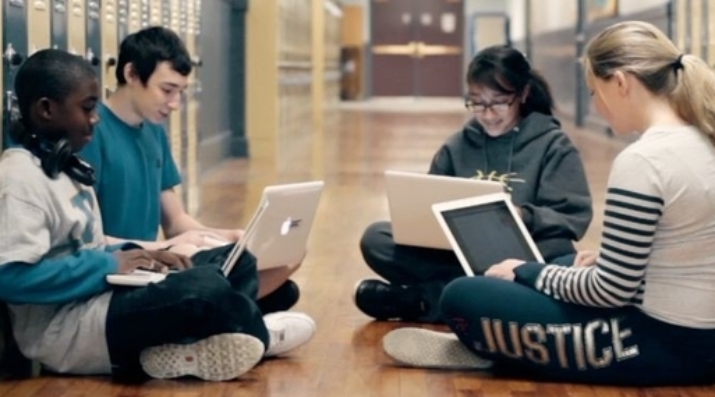Designing for Equity
Cultivating a Learning Culture to Promote Equity
Topics

Together, educators are doing the reimagining and reinvention work necessary to make true educational equity possible. Student-centered learning advances equity when it values social and emotional growth alongside academic achievement, takes a cultural lens on strengths and competencies, and equips students with the power and skills to address injustice in their schools and communities.
Practitioner's Guide to Next Gen Learning
Insights and resources from the Next Generation Learning Challenges team's journey to grow its equity practice.
How do we help create more diverse, equitable, and inclusive learning? Team NGLC has been engaged with this question for a few years, and we know we're not alone. We sometimes reflect on what we've learned, and ask ourselves: What do we know now that we wish we'd had the wisdom to know earlier? Wisdom is born of experience. Here's our contribution to any of you who may still be in the early stages of your journey, or looking for some tips to persist along the way. Likewise, we welcome your wisdom, so we can continue to learn.
This edition of Friday Focus: Practitioner's Guide to Next Gen Learning is dedicated to growing your equity practice by sharing what we've learned, so far, and curating go-to tools and resources from NGLC's network of next gen learning schools and leaders. This is the story of our team's journey with insights and resources to support those who are changing mindsets and practice to support diversity, equity, and inclusion in their own work.
Learn from Everyone
Question: Which of the following resources has been most valuable to our equity journey?
a. Contracting with DEI professionals
b. Self-directed, text-based team discussions and problems of practice
c. Learning from schools and leaders in our network
d. Learning from organizations and equity leaders outside our network
e. All of the above.
Answer: All of the above. Even though we're a small team, we benefited from a variety of expertise and coaching experiences. Specifically, we accessed professional learning through the National Equity Project; contracted with Caroline Hill (now at The 228 Accelerator); and this past year joined the Promise 54 Accelerator. Each of these resource types can provide essential tools for your team's growth and support change of practice. Each one is also a cohort learning experience or community of practice with additional benefits well beyond the content and tools that are shared. You can also search for consultants at the newly created Catalyst DEI Expert Hub.
Take the Time
Expect to dedicate significant time and resources to your own professional learning. Your ability to adopt different mindsets and practice will likely not keep pace with your feelings of urgency for more equitable results. Expect your team to feel impatient and to be frustrated that your desired changes to organizational culture, practice, architecture, or mindset aren't manifesting fast enough. Make time to read, discuss, watch videos, try new tools, and build trusting relationships. Building a learning culture around equity takes time, persistence, and patience.
Team NGLC used staff meetings, retreats, off-site training, and networking opportunities to try out new tools, host difficult discussions, as well as reflect and solicit feedback from each other and from our own network. The path is not linear. It's twisted and bumpy, but the good news is there are many excellent "on ramps" and whatever you choose is the right one!
Engage with Essential Readings
One way our team prepared for discussions about equity was by examining how much of our educational history and design stems from and propagates a dominant white cultural lens--from the language or discourse of "education reform" to how we fail to question and reflect in ways that enable transformation and systemic redesign. Readings that challenge your organization's thinking and practice can catalyze change in tangible ways.
For example, after members of the NGLC team read Harvard Business Review articles on the topic of hiring for diversity, we redesigned an upcoming national job posting, changing the networks through which we recruit, and rethinking how we onboard to communicate and foster a culture of inclusion. However, we recommend that you work on developing an inclusive culture at the same time you diversify recruitment; otherwise you won't retain new talent or benefit from the diverse perspectives and abilities you've added to your team.
Another significant change--and one we're still making--is the shift to more facilitative leadership processes that recognize and embrace complexity. Not so long ago, we thought our role was to come up with the solutions and to provide expertise needed to fix system-wide issues. Now, we see our role as facilitating essential sensemaking processes from within and among our educator networks and stakeholder communities. Making this shift requires more facilitative and coaching tools, solid listening skills, and a commitment to valuing processes and relationship-building as much or more than deliverables and results.
In essence, this shift brings in the heart to balance the mind. It also alters roles, definitions, and priorities around leadership. What makes an effective equity leader looks and feels different, so it may create discomfort or feelings of vulnerability until the new behaviors can be implemented regularly and integrated into the learning culture of the community or organization.
We continue to add to our repertoire of well-known protocols to support our equity work: tuning protocols, helping trios, problems of practice, enneagrams, and some forms of rapid prototyping are good examples. Protocols help us structure time to ensure we include all voices. They invite us to reflect and own problems as well as surface multiple perspectives, quiet genius, and divergent or creative thinking that might otherwise be left unsaid.
Protocols, though, are only as good as the leader, user, or designer behind them. This shift is about letting go of our outdated operating norms and reductive strategies designed to maintain command and control. When we embrace new norms such as listening, designing from empathy, and cultivating a learning mindset, we consciously and intentionally crowd out the old norms of systemic oppression.
Connect with Others
It's hard to know what this kind of growth could and should look like unless you've created it for yourself within your own team. That's why equity work invites reflection on your own identity and experience and the quality of your connections and relationships. One of the first places our team started was learning from and with school leaders and regional partners within our own network.
Much of what we learned ended up in our equity toolkit, so you could go there for resources that have been used by and with educators and in next gen learning environments. Another example is the ecosystem hub at the Center for Collaborative Education, which recently released Building Equity in Your Teaching Practice. We're grateful for all the sharing from both school and hub leaders. Their stories have accelerated and deepened our understanding of what's involved in designing for equity.
Consider reaching out to colleagues in schools you admire, and organizations not officially in your network. For example, The Interaction Institute for Social Change and Stanford d.school helped NGLC look at the intersection of learning networks and equity.
One of our collaborators in this work, the team from Remake Learning, held focus groups to listen to the diversity interests in their community network. As a result, they moved away from generic notions of equity to generate specific service priorities, including, "girls in STEM, students in rural areas, traditionally underserved low income families, students of color, exceptional learners, and English as a second language learners."
Friends at the Buck Institute for Education described for us how they used a mix of their own project-based learning pedagogy and appreciative inquiry to learn from local organizations with exemplary "inclusive cultures" to shift mindsets.
Leaders of The New Teacher Project unpacked a particularly difficult conversation for our team, identifying examples of courage and vulnerability, and related how their internal work is better aligned and stronger as a result. We have found inspiration and support in DEI stories like these, and we hope you will, too.
Resources
- The Designing for Equity Professional Learning Toolkit and Discussion Protocols from the NGLC website offer a collection of protocols, professional learning experiences, and other resources from members of our network, including CityBridge, School Reform Initiative, and New Schools for New Orleans.
- "Changing the Discourse in Schools" explores how the ways we use language in schools is often structured to perpetuate the dominant culture rather than support the needs and interest of students. It also includes a graphic that depicts examples of Discourse 1 and Discourse 2.
- "Pursuing Social and Emotional Development Through a Racial Equity Lens: A Call to Action," a publication from The Aspen Institute, makes the case for and provides recommendations about implementing social, emotional, and academic development (SEAD) with a racial equity lens, rather than treating equity and social-emotional learning as separate efforts.
- The norms included in "Four + Agreements for Courageous Conversation" from Fellowship for Race & Equity in Education (FREE) supported the NGLC team as we reflected on and discussed issues of diversity, equity, and inclusion.
- Learning With Others, a report from JFF's Student-Centered Learning Research Collaborative and American Institutes for Research (AIR) shares findings on the relationship between collaboration, personalization, and equity.




